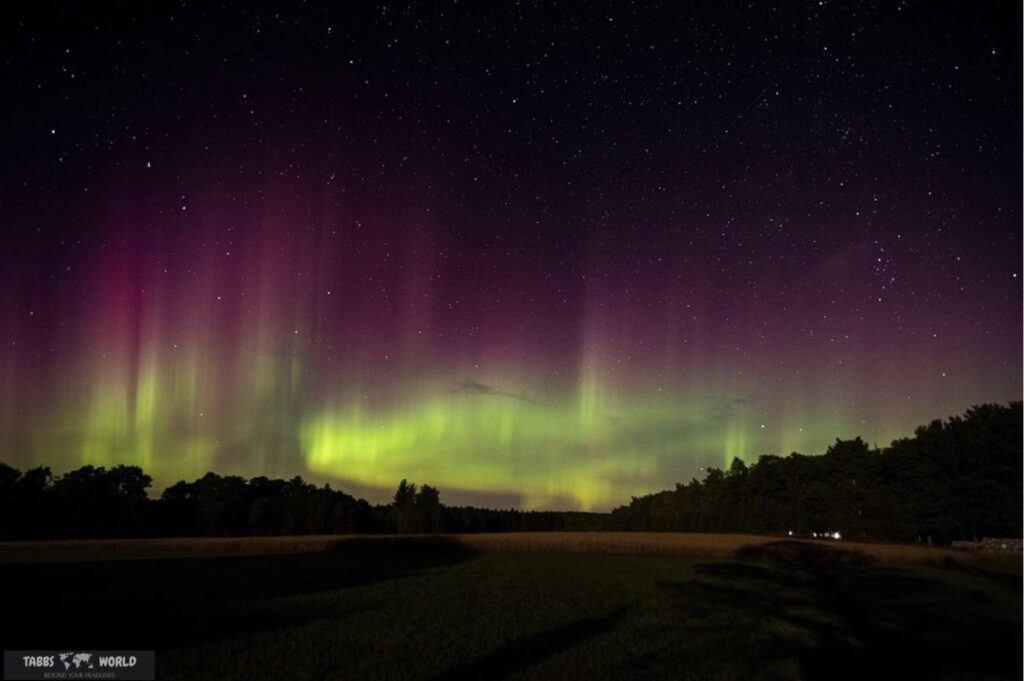
Major geomagnetic storm expected in Michigan:
Michigan residents may be in for an unusual treat as a severe geomagnetic storm is predicted to collide with the Earth’s magnetic field, bringing the northern lights across the state.
Solar storm forecast:
The National Oceanic and Atmospheric Administration (NOAA) issued a severe geomagnetic storm watch, the first since 2005, that is expected to begin Friday afternoon and continue through the weekend. These storms are generated by energy from the solar wind and by coronal mass ejections (CMEs) from the Sun.
Solar activity and its effects:
NOAA reported several strong solar flares associated with a large sunspot cluster, indicating significant solar activity. Severe geologic storms can disrupt power grids, spacecraft, and radio communications, posing potential hazards.
Northern Lights Visibility:
The northern lights, or aurora borealis, are usually seen in northern regions but can be seen further south during geologic storms. The expected intensity of this storm suggests visibility in Michigan, with possible views as far south as Alabama.
Best time to visit:
Experts recommend viewing the northern lights after 10 p.m., with peak visibility expected late Friday and early Saturday. While timing predictions are difficult due to the distance and complexity of solar events, storm arrivals are highly predictable.
Best places to visit in Michigan:
Michigan’s Upper Peninsula offers uninterrupted views of the Northern Lights, especially along the southern shore of Lake Superior. Peak viewing times are in April, October and November, although the phenomenon can be seen year-round with favorable conditions.
Suggestions for viewing:
To maximize the chances of seeing the northern lights, fans should monitor weather forecasts, use apps for visibility forecasts, and look for locations with minimal light pollution. NOAA provides a 30-minute forecast for the best viewing times.
While seeing the northern lights in Michigan may require patience and favorable conditions, the expected geomagnetic storm presents a rare opportunity for residents to witness this breathtaking natural phenomenon.
Table of Contents
What are the northern lights, and why are they visible in Michigan?
The northern lights, or aurora borealis, are natural light displays caused by solar particles interacting with Earth’s magnetic field. During geomagnetic storms, these lights can be seen further south, including regions like Michigan.
When is the best time to see the northernn lights in Michigan?
Peak viewing times for the northern lights in Michigan occur during months like April, October, and November, near the spring and fall equinoxes. However, they can be observed year-round with favorable conditions.
What causes geomagnetic storms, and how do they affect the visibility of the northernn lights?
Geomagnetic storms are disruptions in Earth’s magnetosphere caused by solar winds and coronal mass ejections (CMEs) from the sun. These storms intensify the northern lights, making them visible in regions further south than usual, including Michigan.
Where are the best locations in Michigan to view the northernn lights?
Michigan’s Upper Peninsula offers optimal viewing locations, especially along the southern coast of Lake Superior. Areas with minimal light pollution provide the best chances for observing the northern lights.
How can I maximize my chances of seeing the northernn lights in Michigan?
To increase the likelihood of witnessing the northern lights, monitor meteorological forecasts for clear skies, use apps for visibility predictions, and choose locations with minimal light pollution. NOAA provides a 30-minute forecast for optimal viewing times.



